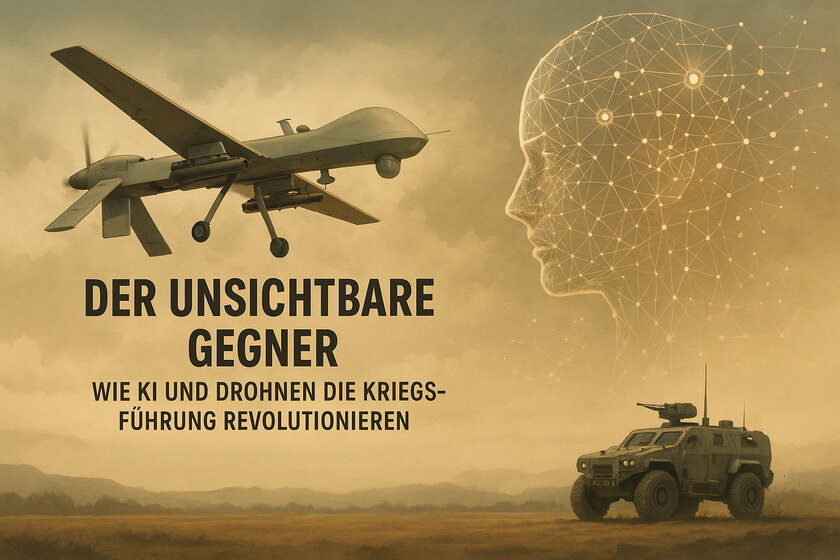
The Invisible Enemy – How AI and Drones Are Transforming Modern Warfare
Weapons without pilots. Decisions without time.
The rules of warfare are being rewritten — not by treaties, but by technologies. Autonomous drones, AI-assisted reconnaissance, sensor-driven targeting: once dismissed as sci-fi, they are now active assets on modern battlefields.
We are witnessing the emergence of autonomous and virtual tactics — and Europe must decide whether to lead, follow, or fall behind.
The rise of algorithmic combat
Military power today is no longer about boots on the ground — it's about:
- Instant data processing
- Microsecond-level decision cycles
- Autonomous, synchronized operations across domains
“Clearly, at the moment, it is the drone technology which is really changing the way we conduct these wars. You see now $400 Ukraine drones taking out multi-million dollar Russian tanks.”
– Mark Rutte, NATO Secretary General, WEF Davos 2024
That’s not just a comment — it’s a strategic signal. Because without smart, autonomous support on the ground, even the most advanced drone strikes lose tactical depth. Airpower requires ground intelligence. Ground mobility requires precision control.
Drive-by-Wire: The tactical backbone of autonomy
This is where Drive-by-Wire becomes essential. It’s not just an interface — it’s the translation layer between algorithm and action.
What does that mean in concrete terms?
- Execute directives instantly (e.g., route change on threat detection)
- Maintain full mobility through redundancy in critical systems
- Enable unmanned platooning convoys, tactical resupply, and automated withdrawal
- Support remote-controlled missions with near-zero latency
NX NextMotion by Arnold NextG – a military-grade Drive-by-Wire platform engineered for real-world deployment.
Autonomy requires trust, not just performance
A major issue in the debate about AI in warfare: accountability. AI may analyze, prioritize, and predict — but it must not act alone. That's why Arnold NextG’s systems are built with fail-safe layers, ensuring:
- The human remains in the command loop
- All critical functions are redundantly secured
- No black-box logic can execute lethal operations autonomously
“No autonomous system should be allowed to independently decide over life and death.”
– Konrad Adenauer Foundation & MIGS, 2025
From lab to field: Autonomous scenarios already in testing
Drone supply carriers. Mine Sweepers. Automated casualty evacuation vehicles. Border surveillance rovers. These aren’t blueprints — they’re in field trials across Europe and NATO frameworks.
What was missing until now?
A certified, secure and modular control interface between AI decisions and actual movement. Arnold NextG delivers exactly that.
With NX NextMotion, armed forces get:
- ASIL D and SIL3 certification
- Multi-redundant control and communication pathways
- Plug-and-play integration with legacy and new vehicle platforms
Conclusion: AI won’t win wars – but Drive-by-Wire might decide them
Artificial Intelligence will change how wars are fought. But without Drive-by-Wire, autonomy remains theoretical. This technology is the bridge between high-level decision-making and physical execution — between algorithm and armour. NX NextMotion is more than a control system. It’s operational sovereignty in motion.




